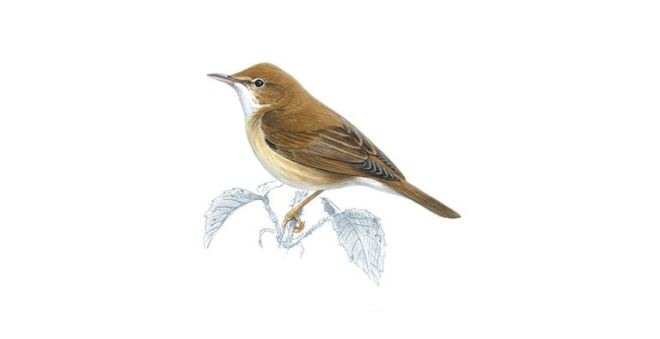It was a huge relief to hit the road this morning on a birding twitch, for the first time since mid-March. There are not too many of what I term “annually occurring” small migrant European passerines that I still require for my life list, and I scan the national bird information services each spring and autumn in the hope of gaining such records. Amongst those birds in recent seasons have been Aquatic, Blyth’s Reed, Greenish and Marsh Warblers; so when the last of those turned up just 70 miles from home over the weekend it was a must see.
Marsh Warbler disappeared as a national breeding species through the latter part of the 20th century, and must now be regarded as a rare and local annual visitor. By the 1970s it bred in significant numbers only in Worcestershire, where 40-70 pairs were recorded annually. A very small population then developed slowly in south-east England and especially Kent, but both these clusters were effectively extinct by the turn of the century. Most records in the British Isles now occur in early summer and this post’s bird was one of 17 individuals logged in the British Isles over the previous seven days.

Marsh Warbler © rights of owner reserved
MW breeds in rank herbaceous vegetation, often besides water courses and ditches or on damp wasteland, and sometimes on the fringes of reed beds. It occurs through middle latitudes of continental Europe from eastern France and into western Asia. This bird is very similar to Reed Warbler in appearance but the song is quite distinctive (see here). Collins describes this as “a stream, broken by brief pauses of whirring, excitable and whistling notes with for the most part high voice and furious tempo”. Singing males are notable for expert mimicry of as many as 75 other European and African bird species. On closer study these prove to have been learned in their first summer and are not added to in subsequent years.
Today’s individual was first reported on Saturday evening (6th) but I thought better of going for it on a Sunday when the site might likely have been crowded with non-birders. Having listened to the song on-line, I recognised it as soon as I arrived at King’s Meads (TL351139) around 7:50 am this morning. The sound was coming from water meadows between a canal towpath and the River Lea, in which I could see just two birders. They were standing in a spot that had been flattened by presumably many more a day earlier and so I went to join them, being careful to tread only where others had before me.
The song continued to issue from a bush (pictured above) a short distance before us, but I suspected the bird itself was on the far side. Three more birders then approached along the towpath and soon their body language suggested they had located it. One of them indeed beckoned and so we went to join them. Before too long the Marsh Warbler sat up singing in the top of the bush, and my mission for today was thus accomplished. Things were as simple as that. For the RBA gallery of this bird see here.
King’s Meads (see here) comprises 96 hectares (237 acres) of grazed riverside flood meadows, criss-crossed by water courses and ditches. The site lies between the neighbouring towns of Hertford and Ware, and is maintained as a nature reserve by Herts and Middlesex Wildlife Trust. I remained there for around an hour, during which my quest showed well on and off in the top of it’s adopted home, pouring out that rich and curious song throughout.
So now the dwindling residue of bird lifers that I might realistically encounter within my preferred range nationally has been reduced by one more item. A second Marsh Warbler for Herts turned up at Stocker’s Lake (TQ046937), Rickmansworth later on this day, but I had already heard and seen my lifer well in Ware and so was satisfied.


